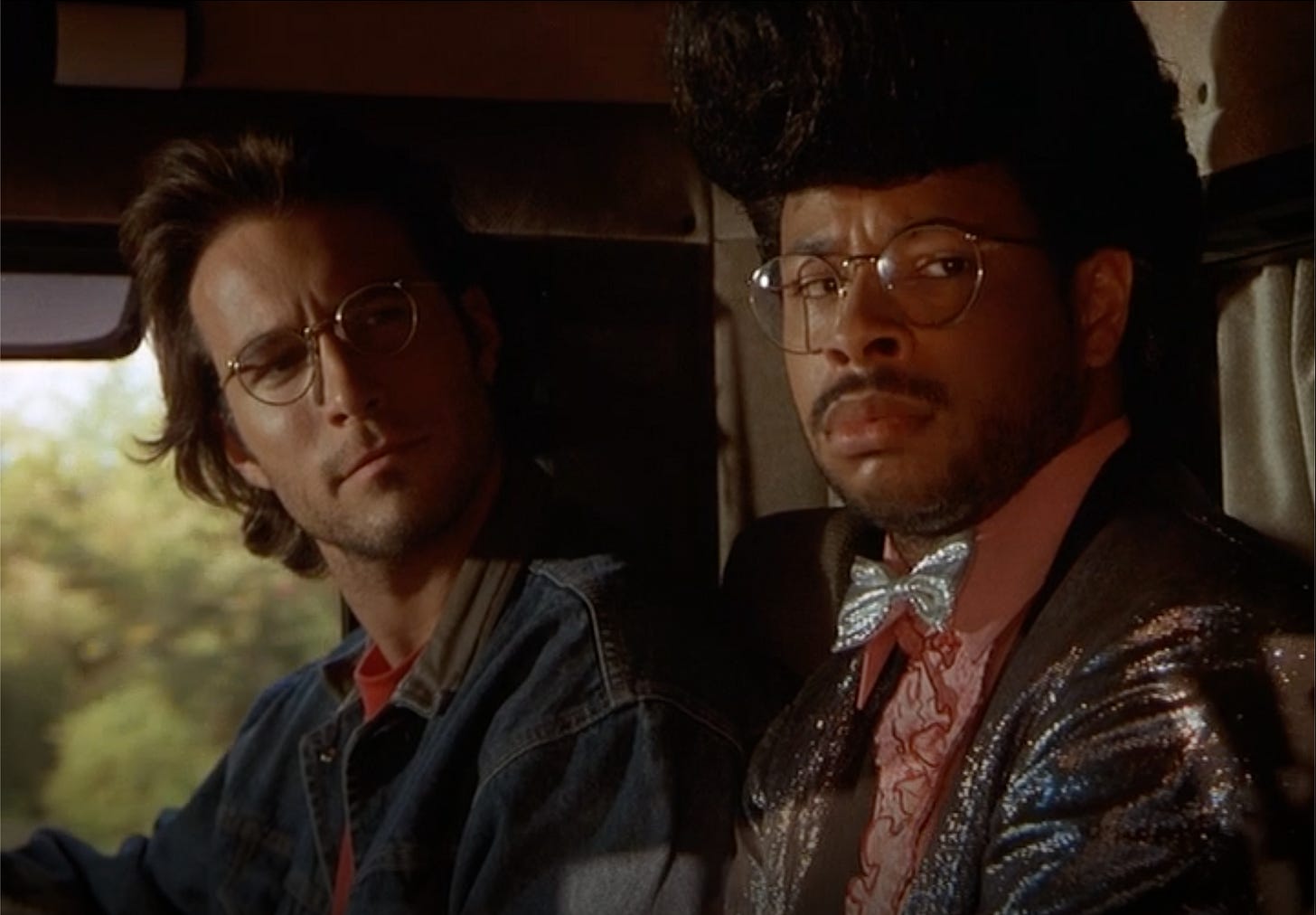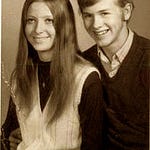Particles ejected from the Sun travel at 45 million miles per hour towards each of us every day. They are caught in our planet’s magnetic field and redirected towards the North and South Poles, where they become the most fantastic light show that nature provides the denizens of Earth. It is a blissful display of nature in balance that should invite gratitude from every living being capable of rational thought and action.
The first episode of Northern Exposure was released on CBS Prime Time on July 12, 1990. This was a rarified time for television drama, and Northern Exposure was far from the only cool, weird, and wonderful television show being broadcast that year.
Twin Peaks concluded its first season on May 23, 1990, about seven weeks before the Pilot of Northern Exposure aired. So there is no reason to think that one show impacted the other’s first season, and yet, I have a question.
What would Northern Exposure and Twin Peaks have been like if dreams were extracted from their narratives?
Let me back up. Northern Exposure is an ensemble drama-comedy that centers on Joel Fleishman, a Jewish New York Doctor who sold his education for indentured servitude to the State of Alaska for several years. Joel thinks he’ll be working in Anchorage, which has a semblance of civilization, but they don’t need him there. Elated at first, he has images of returning quickly to New York City with a free degree, ready to set up practice and buy a better apartment on the Upper West Side. But, alas, that fast exit was not to be for Dr. Fleishman. Instead, he will be sent to Cicily, on the cusp of the new Alaska Riviera.
Joel rages against the dying of the Broadway Lights he won’t see for years and years, but there is no fighting fate. Instead, he is to be indentured for a segment of his life to the People’s health in the Alaskan Bush. And what a wonderful cast of characters they are in Northern Exposure, which concluded its eight-episode first season on August 30, 1990, exactly one month before Twin Peaks returned to reveal who shot Agent Cooper in Season 2.
These two shows are forever caught in a nexus of American history and culture, airing between Fall seasons at a time when Americans watched content on so significantly few television stations, compared to the overwhelming choices we have now.
And both of these shows rely on dreams to drive their powerful narratives. Something was going on in the zeitgeist of American Television production at this time, immediately after the collapse of Soviet Russia. America was soul searching for a proper new enemy to fight. Writers, directors, producers, and actors across television were starting to reach deep inside and bring these shadows of our American character into the light. Dreams in the narrative are a critical bridge to executing this maneuver in Art.
For Northern Exposure, the season one finale “Aurora Borealis” is a masterpiece of television storytelling. In my own opinion, two of my favorite long-term narratives are introduced in this episode, and one of the established narratives takes a big step forward. You don’t need to have seen the show to enjoy the situations I layout below:
Adam
Adam Arkin stepped into a strange costume for this episode. His character starts as some version of Bigfoot, a peculiar creature walking the Alaskan wilderness in bare feet that seem human.
During a period of strong, full Moon that is like the Sun shining at night, Joel has to take a bottle of pills up to a Ranger who is stationed at a high elevation watching for forest fires. On the way back home, with no civilization in sight, Joel’s Chevy breaks down on a logging road, and for the first time in Alaska, he is alone and at the mercy of a true wilderness. New York may be the concrete jungle, but it is leagues safer than where he finds himself at this point in his journey.
He falls asleep in his truck to the sound of wolves and owls (they are what they seem in this show). Joel is woken to the sound of something rambling through the bed of his truck. He sees a man and calls out to him, angry at first, then begging him to come back and help him. “You can rip me off; just come back!”
Hours later, Adam returns to the truck out of mercy and invites Joel to follow him back to his remote cabin, where he proceeds to cook Joel a gourmet meal of Dim Sum from scratch.
Adam reveals to Joel that he was in Vietnam, saw the fall of Saigon, and lived through the aftermath. He also says that he taught one of the great chefs of New York City at a school in Buffalo. Something doesn’t add up, but the noodles are incredible!
Adam lectures Joel on his table manners and life skills. Adam is fussy, but there is also something loveable inside this character who, for some complex reason, has chosen to walk away from human civilization despite the obvious gifts he has to offer.
Adam is the opposite of Joel in nearly every way, though they both share a misanthropic view of their fellow human beings despite each having their brilliant talents to share with their those people. Of course, if they can meet in the middle, they will still be perfectly flawed people, but they may have a shot at being happy. And this is what Northern Exposure is about, seeking happiness through the annoying struggle of dealing with other people.
Adam is a recurring character that only grows more wonderful throughout Northern Exposure’s six seasons. Also, his wife is named Eve. She completely controls Adam to protect him from himself, which is a brilliant and straightforward introduction that makes this complex character even deeper and funnier.
Bernard
Most people think of Chris In The Morning when they think of Northern Exposure. John Corbett’s innocent and star-light-filled portrayal of dreamer Chris Stevens should be remembered as an icon of this show. A former convict, Stevens made his way from the poor white mountainside towns of West Virginia to the cusp of the Alaskan Riviera, looking for redemption. He has found it and is on a journey. Reciting Jung over the airwaves with Louis Armstrong’s Moon River as a soundtrack, this episode finds Chris Stevens as an artist caught in a current obsession.
The strong Moon is mixing with the Northern Lights in a way that is messing with his dreams. He creates a metal sculpture that includes (dramatic pause) two mountain peaks. In season one of Twin Peaks, Dale Cooper instructs his fellow investigators, “When two separate events occur simultaneously pertaining to the same object of inquiry, we must always pay strict attention.” And so we shall.
Unbeknownst to Chris, a strange leather-clad biker has rolled into town. Bernard Stevens is a black man, and he’s not lost; he just doesn’t know where he is. By chance, Chris sits next to Bernard at The Brick Tavern and they start to converse. Strange things are happening in Cicily, Alaska, this day.
Bernard reveals that he’s a tax consultant from Portland, Oregon. But he started having bizarre dreams about five nights ago. So he jumped on his motorcycle and started riding to follow those dreams. And he’s ended up here with these people, utterly open to circumstance and chance.
Chris and Bernand immediately bond, and when Chris shows Bernard his artwork, they commit to completing it together. What follows is the beautiful beginning of an excellent sibling love story. It turns out that Bernard and Chris have the same father, who was a long-distance trucker. They were also born on the same day, forcing their father to miss every other one of their birthdays. They become entwined in each other’s dreams. They are fraternal soul mates and remain that way for the entire six seasons of Northern Exposure. Their love rises above race, class, and petty squabbles (though there are at least one of those to come).
Through their love and devotion to one another, Bernard and Chris Stevens become better human beings, capable of being more alone because they are together.
Joel and Maggie
Joel takes Maggie and Ed to the site of Adam’s cabin. No one believed Joel when he told them that he had spent the evening in Adam’s place and ate one of the best gourmet meals he’s had in his life. They laughed him out of the Brick. In this scene, Joel is giddy over finding a forgotten garlic press in the dirt, proving that Adam was indeed here and objective in this new reality.
For the first time, Joel has changed Alaska. It won’t be the last.
And Maggie has fallen deeper in love with this selfish man despite her best intentions, sinking another level into his heart in this scene. Oh, the journey these two go on, getting ever closer together one throat-ripping argument at a time.
Dream Connections
In Twin Peaks, Cooper’s dreams occur in the Red Room or some extension of it until The Return (Season 3, Showtime 2017), wherein I maintain the entire season takes place in Cooper’s damaged, dreaming mind. But in Season 1, Cooper’s Red Room dreams were the strangest thing seen on television that year (and maybe ever).
Cooper plays a dangerous game, chasing Laura Palmer’s killer through the psychology of his dreams in a town that hosts powerful supernatural forces that bend towards dark endings.
In Northern Exposure, dreams are also experiences of revelation, but towards much happier ends. For example, dreams bring Chris and Bernard together. Portals in dreams will also drive the narrative forward to a conclusion in Season 6, much like they function in Twin Peaks The Return and Glastonbury Grove during the original series.
I don’t believe that Twin Peaks and Northern Exposure have any commercial connection besides being broadcast on opposing channels off-season in the initial series run. But I do believe in Synchronicity, which is defined as the simultaneous occurrence of events that appear significantly related but have no discernible causal connection.
Artists never create in a vacuum, and though these stories differ wildly in their elements, they each tell a hero’s journey about selfish males who think they run the world around them but are revealed naked and broken by fate.
Joel Fleishman and Dale Cooper must become more than they think they are to become what their world needs them to be. But, like us, they dream and their dreams melt into their destiny.

















Share this post